
Intel Pentium N3520 Benchmark, test e specifiche
Ultimo aggiornamento:
Intel Pentium N3520 è un core processor 4. Può gestire 4 thread contemporaneamente ed è stato introdotto il Q4/2013. Si basa sul 6. Gen della serie Intel Pentium e richiede una scheda madre con il socket BGA 1170. Intel Pentium N3520 ottiene 237 punti con un core CPU nel benchmark Geekbench 5. Quando si utilizzano tutti i core della CPU, il risultato è 752 punti.
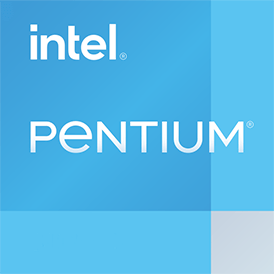
| Cognome: | Intel Pentium N3520 |
|---|---|
| Famiglia: | Intel Pentium (150) |
| Gruppo CPU: | Intel Pentium J2000/N3500 (6) |
| Architettura : | Bay Trail |
| Segmento: | Desktop / Server |
| Generazione: | 6 |
| Predecessore: | -- |
| Successore: | -- |
CPU Cores e frequenza di base
I 4 core della CPU del Intel Pentium N3520 clock con 2,17 GHz (2,42 GHz). Il numero di core della CPU e la frequenza di clock del processore sono in gran parte responsabili delle prestazioni complessive.
| CPU Cores / Threads: | 4 / 4 |
|---|---|
| Architettura principale: | normal |
| Cores: | 4x |
| Hyperthreading / SMT: | No |
|---|---|
| Overclocking: | No |
| Frequenza: | 2,17 GHz |
| Turbo Frequenza (1 Core ): | 2,42 GHz |
| Turbo Frequenza (4 Cores): | 2,42 GHz |
Grafica interna
Con Intel HD Graphics (Bay Trail GT1), Intel Pentium N3520 ha una grafica integrata. Questo ha 4 processori SM, che hanno un totale di 32 texture shader. L'iGPU non solo abilita i giochi, ma accelera anche in modo significativo la riproduzione di video, ad esempio.
| nome GPU: | Intel HD Graphics (Bay Trail GT1) |
|---|---|
| Frequenza GPU : | 0,31 GHz |
| GPU (Turbo ): | 0,85 GHz |
| Unità di esecuzione: | 4 |
| Shader: | 32 |
| Hardware Raytracing: | No |
| Data di lancio : | Q3/2013 |
| Max. visualizzazioni: | 2 |
|---|---|
| Generation: | 7 |
| Direct X: | 11.2 |
| Tecnologia : | 22 nm |
| Max. GPU Memoria: | 2 GB |
| Frame Generation: | No |
Hardware codec support
I processori con grafica integrata possono elaborare e riprodurre video in modo più rapido ed efficiente. Ciò può avere un effetto positivo sulla durata della batteria dei notebook, ad esempio.
| h265 / HEVC (8 bit): | No |
|---|---|
| h265 / HEVC (10 bit): | No |
| h264: | Decodificare / Codificare |
| VP8: | No |
| VP9: | No |
| AV1: | No |
|---|---|
| AVC: | Decodificare / Codificare |
| VC-1: | Decodificare |
| JPEG: | Decodificare |
Memoria & PCIeIntel Pentium N3520 supporta fino a 8 GB memoria in un massimo di 2 (Dual Channel) canali di memoria. Ciò si traduce in una larghezza di banda di memoria massima di 21,3 GB/s. |
|
| Tipo di memoria : | Banda di memoria: |
|---|---|
| DDR3-1333 | 21,3 GB/s |
| Max. Memoria: | 8 GB |
| Canali di memoria : | 2 (Dual Channel) |
| ECC: | No |
| PCIe: | 2.0 x 4 |
| PCIe Larghezza di banda: | 2,0 GB/s |
Gestione termicaCon il TDP, il produttore del processore specifica la soluzione di raffreddamento necessaria per il processore. Intel Pentium N3520 ha un TDP di 7.5 W. |
|
|---|---|
| TDP (PL1 / PBP): | 7.5 W |
| TDP (PL2): | -- |
| TDP up: | -- |
| TDP down: | 4.5 W |
| Tjunction max.: | 100 °C |
Dettagli tecnici
Intel Pentium N3520 ha una cache grande 2,00 MB. Il processore è prodotto in %%Manufacturing%%. La produzione moderna aumenta l'efficienza del processore.
| Tecnologia : | 22 nm |
|---|---|
| Design a chip: | Monolitico |
| Presa: | BGA 1170 |
| L2-Cache: | -- |
| L3-Cache: | 2,00 MB |
| AES-NI: | No |
| Sistemi operativi: | Windows 10, Linux |
| Virtualizzazione: | VT-x, VT-x EPT |
|---|---|
| Set di istruzioni (ISA): | x86-64 (64 bit) |
| Estensioni ISA: | SSE4.1, SSE4.2 |
| Data di lancio : | Q4/2013 |
| Prezzo di rilascio: | -- |
| Numero di parte: | -- |
| Documenti: | Scheda tecnica |
Valuta questo processore
Risultati di benchmark

I risultati del benchmark per Intel Pentium N3520 sono stati attentamente controllati da noi. Pubblichiamo solo risultati di benchmark che sono stati creati da noi o che sono stati inviati da un visitatore e poi controllati da un membro del team. Tutti i risultati sono basati e rispettano le nostre linee guida di benchmark.
Geekbench 5, 64bit (Single-Core)
Geekbench 5 è un benchmark multi-piattaforma che usa in modo intensivo la memoria del sistema.Il test single-core utilizza solo un nucleo elaborativo della CPU. A tal fine, il numero di nuclei elaborativi o la capacità di hyperthreading non sono rilevanti.
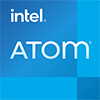
|
Intel Atom x7-Z8700
4C 4T @ 2,40 GHz |
||

|
Intel Celeron J1750
2C 2T @ 2,41 GHz |
||

|
Intel Celeron J1800
2C 2T @ 2,58 GHz |
||
|
|
Intel Pentium N3520
4C 4T @ 2,42 GHz |
||

|
Qualcomm Snapdragon 808
6C 6T @ 1,82 GHz |
||

|
Intel Atom x6200FE
2C 2T @ 1,00 GHz |
||

|
Intel Atom C2538
4C 4T @ 2,40 GHz |
||
Geekbench 5, 64bit (Multi-Core)
Geekbench 5 è un benchmark multi-piattaforma che usa in modo intensivo la memoria del sistema.Il test multi-core coinvolge tutti i nuclei elaborativi della CPU e si avvale del hyperthreading.

|
AMD Athlon II X2 250
2C 2T @ 3,00 GHz |
||

|
Intel Celeron N4000C
2C 2T @ 2,60 GHz |
||
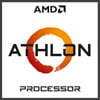
|
AMD Athlon 5150
4C 4T @ 1,60 GHz |
||
|
|
Intel Pentium N3520
4C 4T @ 2,42 GHz |
||

|
AMD Opteron X3216
2C 2T @ 1,60 GHz |
||
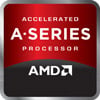
|
AMD A8-3500M
4C 4T @ 2,40 GHz |
||
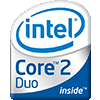
|
Intel Core2 Duo E6850
2C 2T @ 3,00 GHz |
||
Geekbench 6 (Single-Core)
Geekbench 6 è un punto di riferimento per computer, notebook e smartphone moderni. Ciò che è nuovo è un utilizzo ottimizzato delle architetture CPU più recenti, ad esempio basate sul concetto big.LITTLE e combinando core CPU di diverse dimensioni. Il benchmark single-core valuta solo le prestazioni del core della CPU più veloce, il numero di core della CPU in un processore è irrilevante qui.
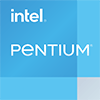
|
Intel Pentium N3700
4C 4T @ 2,40 GHz |
||

|
Intel Celeron J1900
4C 4T @ 2,42 GHz |
||

|
Intel Celeron N2820
2C 2T @ 2,39 GHz |
||
|
|
Intel Pentium N3520
4C 4T @ 2,42 GHz |
||

|
Intel Atom x5-Z8500
4C 4T @ 2,24 GHz |
||

|
MediaTek Helio G35
8C 8T @ 2,30 GHz |
||

|
Intel Celeron J3160
4C 4T @ 2,24 GHz |
||
Geekbench 6 (Multi-Core)
Geekbench 6 è un punto di riferimento per computer, notebook e smartphone moderni. Ciò che è nuovo è un utilizzo ottimizzato delle architetture CPU più recenti, ad esempio basate sul concetto big.LITTLE e combinando core CPU di diverse dimensioni. Il benchmark multi-core valuta le prestazioni di tutti i core della CPU del processore. I miglioramenti del thread virtuale come AMD SMT o l'Hyper-Threading di Intel hanno un impatto positivo sul risultato del benchmark.

|
Intel Pentium N3700
4C 4T @ 2,40 GHz |
||

|
Intel Pentium 2117U
2C 2T @ 1,80 GHz |
||

|
Intel Pentium 3558U
2C 2T @ 1,70 GHz |
||
|
|
Intel Pentium N3520
4C 4T @ 2,42 GHz |
||

|
Intel Celeron J3160
4C 4T @ 2,24 GHz |
||

|
Intel Pentium J2850
4C 4T @ 2,67 GHz |
||

|
Intel Celeron 1000M
2C 2T @ 1,80 GHz |
||
iGPU - Prestazioni FP32 (GFLOPS a precisione singola)
Le prestazioni di calcolo teoriche dell'unità grafica interna del processore con precisione semplice (32 bit) in GFLOPS. GFLOPS indica quanti miliardi di operazioni in virgola mobile che l'iPPU può eseguire al secondo.

|
Intel Pentium J2900
Intel HD Graphics (Bay Trail GT1) @ 0,90 GHz |
||

|
Intel Pentium N3530
Intel HD Graphics (Bay Trail GT1) @ 0,90 GHz |
||

|
Intel Pentium N3540
Intel HD Graphics (Bay Trail GT1) @ 0,90 GHz |
||
|
|
Intel Pentium N3520
Intel HD Graphics (Bay Trail GT1) @ 0,85 GHz |
||

|
Intel Pentium J2850
Intel HD Graphics (Bay Trail GT1) @ 0,85 GHz |
||

|
Intel Celeron N2940
Intel HD Graphics (Bay Trail GT1) @ 0,85 GHz |
||

|
Intel Celeron N2930
Intel HD Graphics (Bay Trail GT1) @ 0,85 GHz |
||
Risultati stimati da PassMark CPU Mark
Alcune delle CPU elencate di seguito sono stati sottoposti a benchmarking da CPU-monkey. Tuttavia, la maggior parte delle CPU non sono state testate e i risultati sono stati stimati utilizzando una formula segreta di proprietà di CPU-monkey. Come tali, essi non riflettono con precisione i valori attuali di Passmark CPU Mark e non sono stati approvati da PAssMark Software Pty Ltd.

|
Intel Core2 Duo E7600
2C 2T @ 3,06 GHz |
||

|
AMD Athlon II X2 250
2C 2T @ 3,00 GHz |
||

|
Intel Celeron 3215U
2C 2T @ 1,70 GHz |
||
|
|
Intel Pentium N3520
4C 4T @ 2,42 GHz |
||

|
Intel Celeron J1900
4C 4T @ 2,42 GHz |
||

|
Intel Core2 Duo E6850
2C 2T @ 3,00 GHz |
||

|
AMD Athlon II X2 250e
2C 2T @ 3,00 GHz |
||
Cinebench R15 (Single-Core)
Cinebench R15 è il successore di Cinebench 11.5 ed è anch'esso basato su Cinema 4D. Cinema 4D è un software usato a livello mondiale per creare forme in 3D. Il test single-core utilizza solo un nucleo elaborativo della CPU. A tal fine, il numero di nuclei elaborativi o la capacità di hyperthreading non sono rilevanti.

|
Intel Celeron 2961Y
2C 2T @ 1,10 GHz |
||

|
Intel Celeron J1900
4C 4T @ 2,42 GHz |
||

|
Intel Pentium N3510
4C 4T @ 2,40 GHz |
||
|
|
Intel Pentium N3520
4C 4T @ 2,42 GHz |
||

|
Intel Atom Z3795
4C 4T @ 2,39 GHz |
||

|
Intel Celeron J3160
4C 4T @ 2,24 GHz |
||

|
Intel Celeron N3010
2C 2T @ 2,24 GHz |
||
Cinebench R15 (Multi-Core)
Cinebench R15 è il successore di Cinebench 11.5 ed è anch'esso basato su Cinema 4D. Cinema 4D è un software usato a livello mondiale per creare forme in 3D. Il test multi-core coinvolge tutti i nuclei elaborativi della CPU e si avvale del hyperthreading.

|
Intel Celeron N4000C
2C 2T @ 2,60 GHz |
||

|
Intel Celeron N4020
2C 2T @ 2,70 GHz |
||

|
Intel Celeron N4020C
2C 2T @ 2,80 GHz |
||
|
|
Intel Pentium N3520
4C 4T @ 2,42 GHz |
||
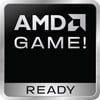
|
AMD Phenom II X2 B53
2C 2T @ 2,80 GHz |
||

|
AMD A9-9425
2C 2T @ 3,10 GHz |
||

|
Intel Celeron N2940
4C 4T @ 2,25 GHz |
||
Benchmarks

Geekbench 5 (SC)
2.488 inserimenti
2.488 inserimenti

Geekbench 5 (MC)
2.461 inserimenti
2.461 inserimenti

Geekbench 6 (SC)
1.754 inserimenti
1.754 inserimenti

Geekbench 6 (MC)
1.702 inserimenti
1.702 inserimenti

FP32 SP (iGPU)
2.026 inserimenti
2.026 inserimenti
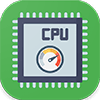
PassMark CPU-Mark
2.391 inserimenti
2.391 inserimenti

Cinebench R15 (SC)
1.106 inserimenti
1.106 inserimenti

Cinebench R15 (MC)
1.101 inserimenti
1.101 inserimenti

Geekbench 3 (SC)
942 inserimenti
942 inserimenti

Geekbench 3 (MC)
938 inserimenti
938 inserimenti

Cinebench R11.5 (SC)
825 inserimenti
825 inserimenti

Cinebench R11.5 (MC)
836 inserimenti
836 inserimenti

Cinebench R11.5 iGPU
383 inserimenti
383 inserimenti
Confronti più popolari
Torna all'indice






